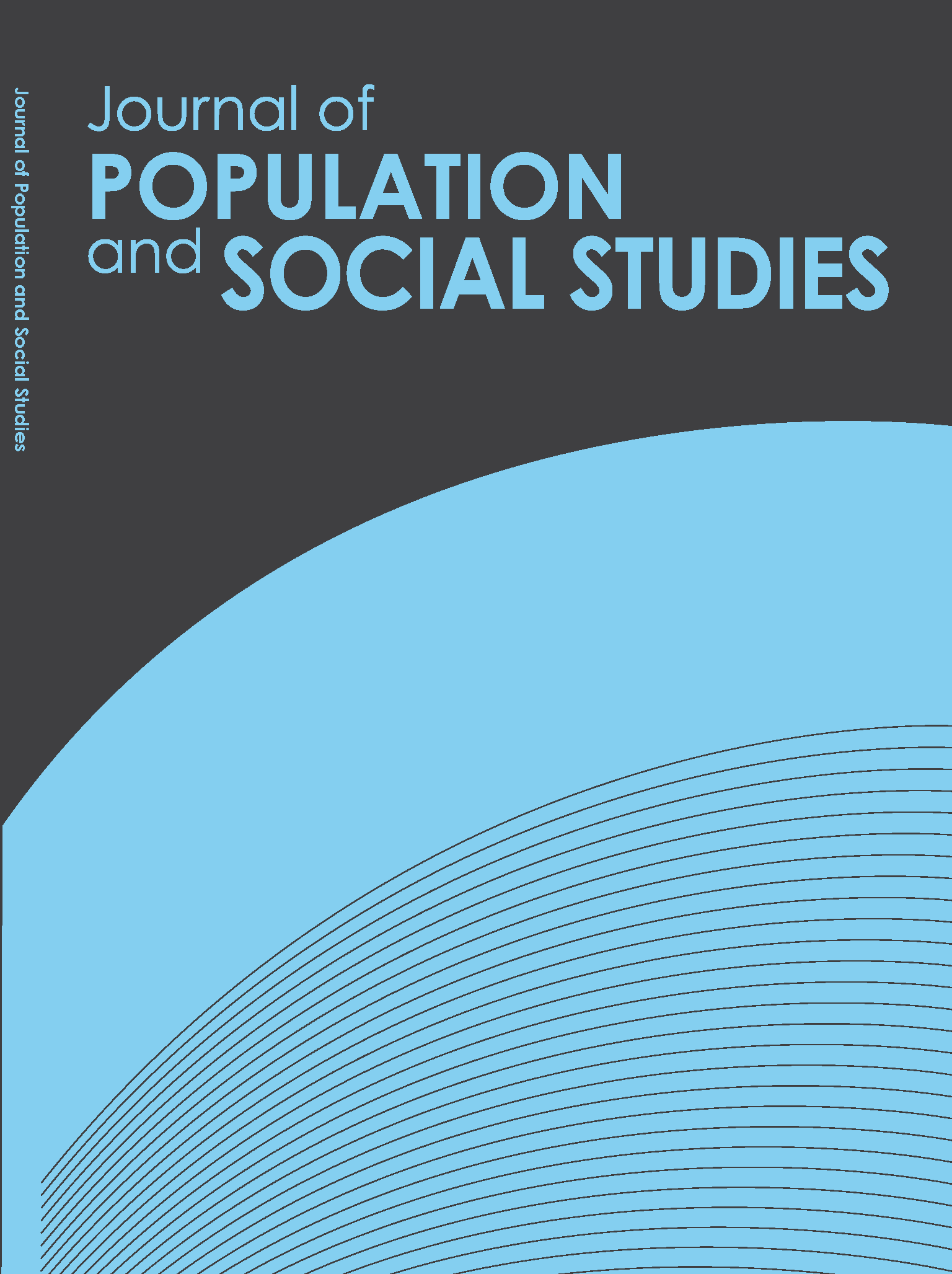Access to Treatment and Cultural Use for People Living with HIV and AIDS (PLWHA) During the COVID-19 Pandemic in the Special Region of Yogyakarta, Indonesia: An Anthropological Approach
Main Article Content
Abstract
During the COVID-19 pandemic, people living with HIV and AIDS (PLWHA) experienced various problems related to the continuity of treatment because lockdowns hamper their drug supplies. This study examined PLWHA’s access to treatment to maintain their health during the COVID-19 pandemic, associated with traditional medicine well-known to Javanese people in Yogyakarta. Qualitative research was conducted in 2020 with online and offline focus group discussions and offline interviews with PLWHA from two NGOs in Yogyakarta, Indonesia. People living with HIV and AIDS had problems getting their medicine on time due to the limited availability. Drugs for a 30-day use were only enough for 15 days or even 10 days, especially at the beginning of the COVID-19 pandemic. They dealt with these drug supply delays jointly with other PLWHA borrowing drugs. To maintain their immunity, besides consuming vitamins, they also used Javanese herbal medicine they believed was effective for maintaining body fitness and immunity, and as alternative medicine besides medical drugs. The culture of Javanese people in Yogyakarta, who have long known herbal medicine contributes to shaping the PLWHA’s view, found that they will turn to herbal medicine to improve immunity.
Article Details

This work is licensed under a Creative Commons Attribution-NonCommercial-NoDerivatives 4.0 International License.
References
• Cabello, A., Zamarro, B., Nistal, S., Victor, V., Hernández, J., Prieto-Pérez, L., Carrillo, I., Álvarez, B., Fernández-Roblas, R., Hernández-Segurado, M., Becares, J., Benito, J. M., Rallón, N., Téllez, R., Castaño, Á. L., Herrero, A., & Górgolas, M. (2020). COVID-19 in people living with HIV: A multicenter case-series study. International Journal of Infectious Diseases, 102, 310–315. https://doi.org/10.1016/j.ijid.2020.10.060
• Center for Disease Control and Prevention. (2022). HIV and COVID-19 Basics. https://www.cdc.gov/coronavirus/2019-ncov/need-extra-precautions/hiv.html
• Chenneville, T., Gabbidon, K., Hanson, P., & Holyfield, C. (2020). The impact of COVID-19 on HIV treatment and research: A call to action. International Journal of Environmental Research and Public Health, 17(12), Article 4548. https://doi.org/10.3390/ijerph17124548
• Friðþjófsdóttir, S. (2014). Alternative medicine: The role and meaning of ritual in the placebo effect. (Published Bachelor’s thesis, University of Iceland). Skemman. https://skemman.is/bitstream/1946/18035/1/skemma.pdf
• Ismiyanto, A. (2019, March 12). Penyebab terbesar penularan HIV dan AIDS di DIY karena faktor seks bebas [The major cause of HIV and AIDS transmission in DIY is free sex]. Tribune Jogja. https://jogja.tribunnews.com/2019/03/21/penyebab-terbesar-penularan-hivaids-di-diy-karena-faktor-seks-bebas
• Kemala, F. (2021). Tes CD4 [CD4 Test]. Hello Health Group. https://hellosehat.com/seks/hivaids/cd4/
• Korkmaz Yaylagül, N., & Yazıcı, S. (2018). The perceptions of elderly Turkish immigrants of health care systems in their home and host countries: A field study focused on Denmark, Britain, and Germany. Toplum ve Sosyal Hizmet, 29(2), 34–50. https://dergipark.org.tr/en/pub/tsh/issue/39687/469961
• Listyawati, & Suprayogo, R. (2018). DIY Rentan Terhadap HIV dan AIDS [DIY is vulnerable to HIV and AIDS]. Media Informasi Penelitian Kesejahteraan Sosial, 42(2), 115–130. https://doi.org/10.31105/mipks.v42i2.2238
• Miles, M., & Huberman, A. M. (1992). Analisis Data Kualitatif [Qualitative Data Analysis]. UI Press. https://opac.perpusnas.go.id/DetailOpac.aspx?id=298242
• Nyoni, T., & Okumu, M. (2020). COVID-19-compliant strategies for supporting treatment adherence among people living with HIV in sub-Saharan Africa. AIDS and Behavior, 24(9), 2473–2476. https://doi.org/10.1007/s10461-020-02888-0
• Penkala-Gawecka, D. (2017). Perceptions of health and illness, and the role of healers in Kyrgyzstan. Public Health Panorama, 3(1), 80–87. https://apps.who.int/iris/handle/10665/254728
• Rokom. (2021, January 20). Kampanye Bulan Viral Load: Pentingnya Mengetahui Status Pengobatan ARV pada ODHA Melalui Pemeriksaan Viral Load HIV [Viral Load Month Campaign: The Importance of Knowing the Status of ARV Treatment for PLWHA through HIV Viral Load Examination]. Sehat Negeriku. https://sehatnegeriku.kemkes.go.id/baca/rilis-media/20200929/0735086/kampanye-bulan-viral-load-pentingnya-mengetahui-status-pengobatan-arv-odha-melalui-pemeriksaan-viral-load-hiv/
• Shiau, S., Krause, K. D., Valera, P., Swaminathan, S., & Halkitis, P. N. (2020). The burden of COVID-19 in People Living with HIV: A Syndemic Perspective. AIDS and Behavior, 24(8), 2244–2249. https://doi.org/10.1007/s10461-020-02871-9
• Task Force for Handling COVID-19. (2020, July 9). Tantangan Pengobatan Penderita ODHA di Tengah Pandemi COVID-19 [The Challenge of Treatment of People with PLWHA in the Midst of the COVID-19 Pandemic]. Satuan Tugas Penanganan COVID-19. https://covid19.go.id/p/berita/tantangan-pengobatan-penderita-odha-di-tengah-pandemi-covid-19
• Triratnawati, A. (2019). Pengobatan Tradisional di Tengah Modernisasi Dunia Medis [Traditional Medicine in the Midst of Modernization of the Medical World]. Prolog Pengobatan Tradisional di Era Modern [Traditional Medicine in Modern Era]. Pustaka Pelajar.
• Winkelman, M. J. (2009). Culture and health: Applying medical anthropology. Jossey Bass.
• Yogyakarta City Government Public Health Office. (2016). Profil Kesehatan Tahun 2016: Kota Yogyakarta (Data Tahun 2015) [2016 Health Profile: Yogyakarta City (2015 data)]. [Data set]. https://kesehatan.jogjakota.go.id/uploads/dokumen/profil_dinkes_2016_data_2015.pdf
• Yogyakarta City Government Public Health Office. (2017). Profil Kesehatan Tahun 2017: Kota Yogyakarta (Data Tahun 2016) [2017 Health Profile: Yogyakarta City (2016 data)]. [Data set]. https://kesehatan.jogjakota.go.id/uploads/dokumen/profil_dinkes_2017_data_2016.pdf
• Yogyakarta City Government Public Health Office. (2018). Profil Kesehatan Tahun 2018: Kota Yogyakarta (Data Tahun 2017) [2018 Health Profile: Yogyakarta City (2017 data)]. [Data set]. https://kesehatan.jogjakota.go.id/uploads/dokumen/profil_dinkes_2018_data_2017.pdf
• Yogyakarta City Government Public Health Office. (2019). Profil Kesehatan Tahun 2019: Kota Yogyakarta (Data Tahun 2018) [2019 Health Profile: Yogyakarta City (2018 data)]. [Data set]. https://kesehatan.jogjakota.go.id/uploads/dokumen/profil_dinkes_2019_data_2018.pdf
• Yogyakarta City Government Public Health Office. (2020). Profil Kesehatan Tahun 2020: Kota Yogyakarta (Data Tahun 2019) [2020 Health Profile: Yogyakarta City (2019 data)]. [Data set]. https://kesehatan.jogjakota.go.id/uploads/dokumen/profil_dinkes_2020_data_2019.pdf


